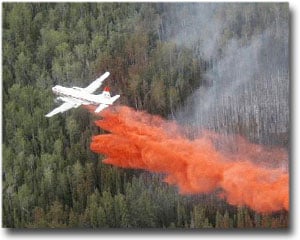 The management of water resources in National Forests and Grasslands continues to be an important topic in the development of the new planning rule, and was discussed at last week’s National Roundtable. While the meeting presentations were intended to focus on the more general topics of forest restoration and resilience, some participants at the meeting wanted to speak specifically about water.
The management of water resources in National Forests and Grasslands continues to be an important topic in the development of the new planning rule, and was discussed at last week’s National Roundtable. While the meeting presentations were intended to focus on the more general topics of forest restoration and resilience, some participants at the meeting wanted to speak specifically about water.
There is substantial interest in this topic. The importance of water and watersheds as a unifying principle in the planning rule was discussed previously on this blog. The Forest Service’s inability to address watershed restoration was also previously discussed, as well as problems integrating scientific information with observed watershed conditions.
The planning rule website contains some of the initial concepts proposed to be included in the rule for addressing watersheds:
- Each Forest Supervisor would assess existing conditions and trends of aquatic systems, riparian systems, connectivity, wetlands, floodplains, and the flow processes. The roles and contributions of each forest would also be determined. Watershed vulnerabilities and risks would be identified.
- Each Forest Plan would be required to address the maintenance or restoration of water resources, including protection for lakes, public water supplies, shorelines, source waters, streambanks, streams, wetlands, and other bodies of water from detrimental changes in water temperatures, blockages of water courses, and deposits of sediments.
- Monitoring would be implemented to evaluate watershed health and status, trends, and risks associated with public water supplies and source water protection areas.
Earthjustice and Pacific Rivers Council released a concept paper last week with additional suggestions about what the planning rule should do. The proposal suggests that the planning rule should require forest plans to establish riparian reserves, prioritize protection and restoration of key watersheds with the highest aquatic integrity, establish measurable watershed conservation objectives and indicators of aquatic ecosystem integrity that are directly linked to management standards and monitoring, describe road removal objectives and road density standards, provide for connectivity and watershed processses, and integrate monitoring of watershed integrity into project design.
A new General Technical Report from the Pacific Northwest Research Station released in June also lists several planning actions that should be considered to protect watersheds from population pressures, land uses, and rapid climate change. It suggests that planning should set priorities for watersheds and specific effective protection measures, based on predicted vulnerabilities to climate change and other stressors. Scenario-based planning should be used to design contingency plans based on plausible events or impacts. The document also lists considerations in protecting watersheds from energy development, fire and fuels projects, infrastructure development, recreation, water use and diversions, timber harvest, and livestock grazing.
Some researchers have also outlined a “no-regrets” strategy to watersheds and planning for potential hotter and drier conditions. Based on scenario planning, a Forest Plan could establish baseline protections and make sure that watershed systems are better able to adapt to whatever comes along.
In a search for a streamlined, easy-to-implement planning rule, the specifics of watershed management may be left out of the proposed text. However, there is strong support for water planning as a central feature of the rule. One watershed program manager told me that the rulewriters should avoid making the same error that many in the Forest Service do, assuming that the concept of restoration only appeared on the scene when foresters started writing about it in the 1990’s and 2000’s. Watershed restoration has a much longer history in the agency and the scientific community, and is one of the foundations for why the Forest Service came into existence. Watershed maintenance and restoration could be the cornerstone of the philosophical underpinning of the rule.







